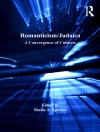This book explores the Catholic aesthetic and mystical dimensions in Kate
Chopin’s fiction within the context of an evolving American Catholicism in the
late nineteenth and early twentieth centuries. Through a close reading of her
novels and numerous short stories, Kate Chopin and Catholicism looks at the
ways Chopin represented Catholicism in her work as a literary device that served
on multiple levels: as an aesthetic within local color depictions of Louisiana, as a
trope for illuminating the tensions surrounding nineteenth-century women’s
struggles for autonomy, as a critique of the Catholic dogma that subordinated
authenticity and physical and emotional pleasure, and as it pointed to the
distinction between religious doctrine and mystical experience, and enabled the
articulation of spirituality beyond the context of the Church. This book reveals
Chopin to be not only a literary visionary but a writer who saw divinity in the
natural world.
Tabla de materias
1. Introduction.- 2. Chopin and Catholicism in America, 1850-1904.- 3. Social and Religious Critique and Transformation through the Short Fiction.- 4. “Catholic Modernism” and the Short Stories.- 5. At Fault: Catholic Doctrine and Social Issues.- 6. The Awakening: Challenging Authority and Rewriting Women’s Spirituality.- 7. Mysticism in Chopin’s Fiction.- 8. Conclusion.
Sobre el autor
Heather Ostman is Professor of English and Director of the Humanities Institute at SUNY Westchester Community College. She is President of the Kate Chopin International Society, and her books include Kate Chopin in Context: New Critical Essays (2015), Kate Chopin in the Twenty-First Century (2008), The Fiction of Junot Díaz: Reframing the Lens (2016), and Writing Program Administration and the Community College (2013).












